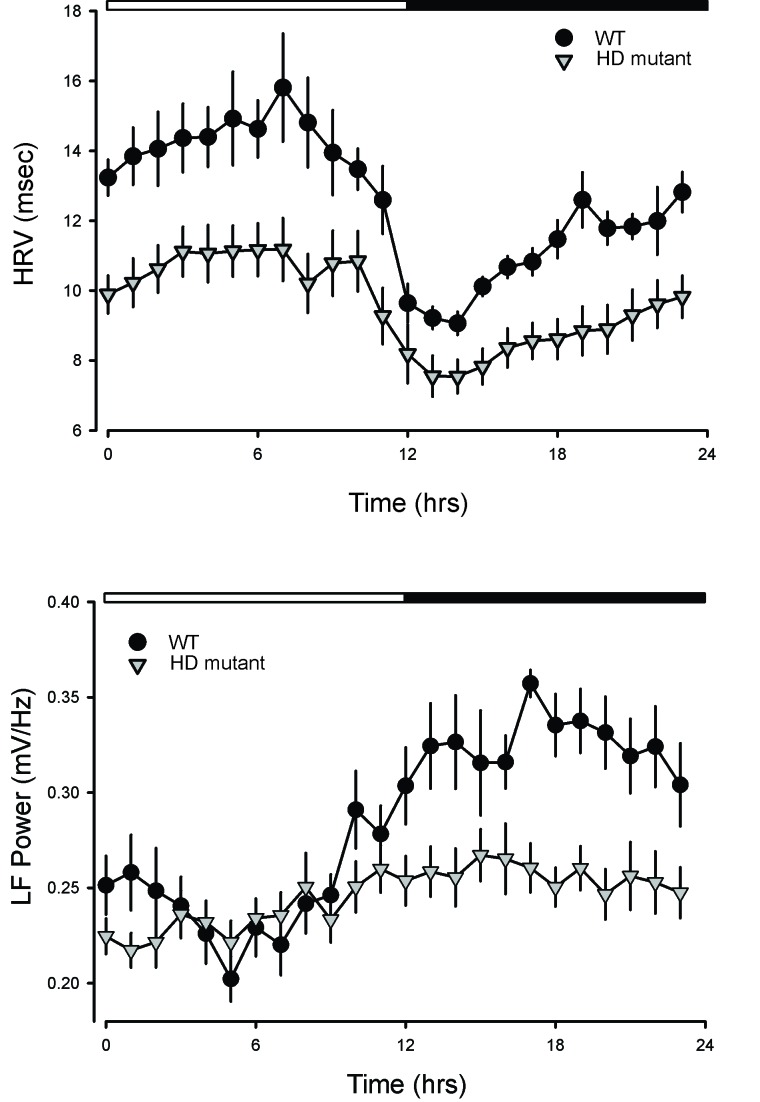Figure 3.
HRV is a measure of variation in the beat-to-beat (R-R) interval that reflects the dynamic balance of sympathetic and parasympathetic control of heart function. Traditionally, HRV is an indication of CV health and low HRV proposed as a predictor for CV disease and mortality. One of the most commonly used methods for evaluation of HRV is power spectral density analysis in which high-frequency (HF) and low-frequency (LF) bands are extracted from the HRV signal, and the spectral power is calculated. Traditionally, the LF power is viewed as a measure of regulation by the sympathetic branch of the ANS, although it is more likely a general index of ANS function. We found robust daily and circadian rhythms in HRV and LP power in WT mice. As shown in the panels, HRV increased during sleep while LF power (sympathetic outflow) was higher when the mice were active. In the HD mutants (Q175), the HRV was low in young mutants and this reduction was largest during the rest phase. The power in the LF domain was significantly reduced in the young mutants with the biggest effects during the night. A similar reduction in HRV was previously observed in the BACHD line [11,14] as well as in the R6/1 model [44]. In HD patients, a similar decrease in HRV has also been reported during the presymptomatic and early stages of HD progression.

